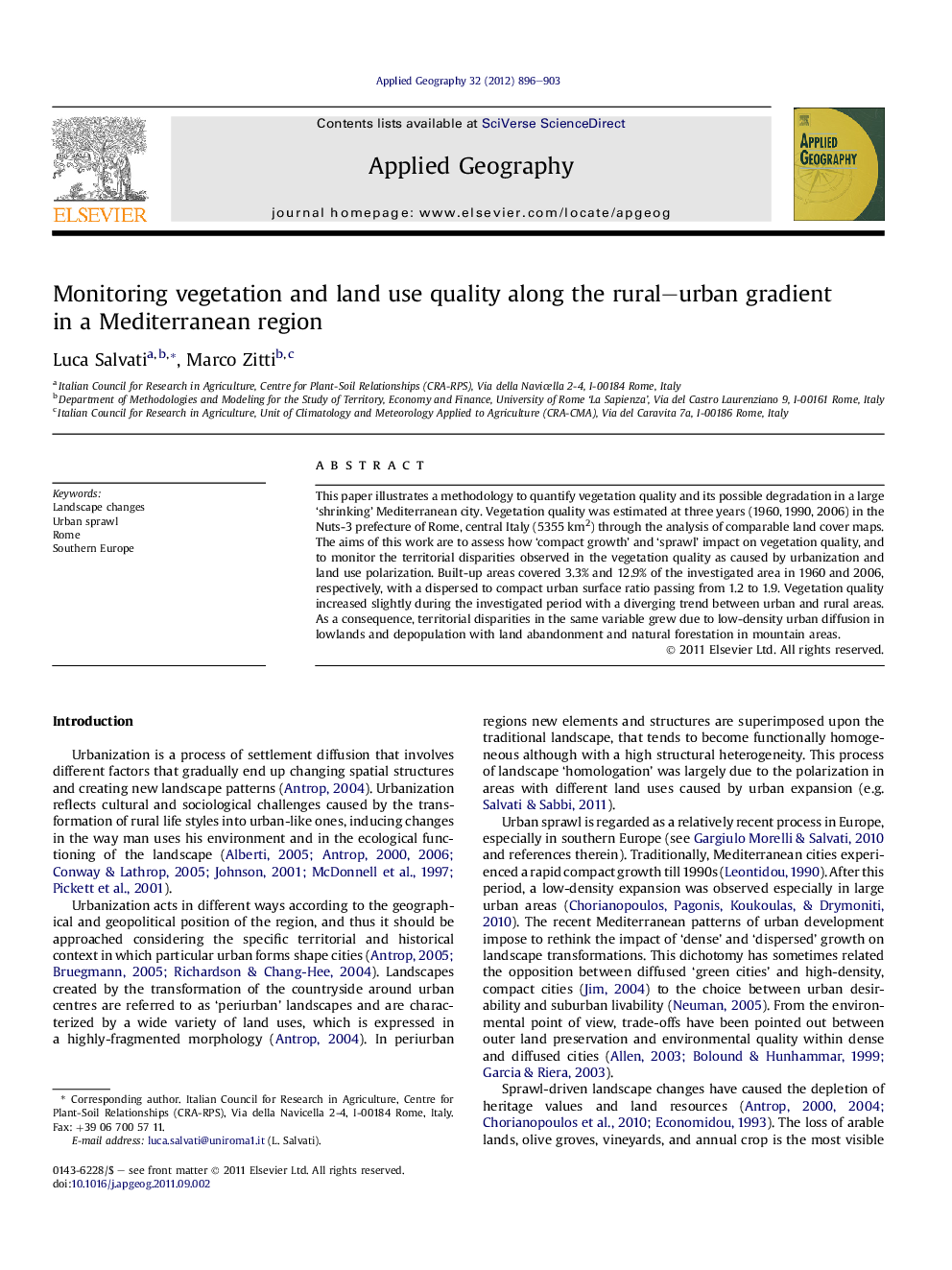| Article ID | Journal | Published Year | Pages | File Type |
|---|---|---|---|---|
| 83611 | Applied Geography | 2012 | 8 Pages |
This paper illustrates a methodology to quantify vegetation quality and its possible degradation in a large ‘shrinking’ Mediterranean city. Vegetation quality was estimated at three years (1960, 1990, 2006) in the Nuts-3 prefecture of Rome, central Italy (5355 km2) through the analysis of comparable land cover maps. The aims of this work are to assess how ‘compact growth’ and ‘sprawl’ impact on vegetation quality, and to monitor the territorial disparities observed in the vegetation quality as caused by urbanization and land use polarization. Built-up areas covered 3.3% and 12.9% of the investigated area in 1960 and 2006, respectively, with a dispersed to compact urban surface ratio passing from 1.2 to 1.9. Vegetation quality increased slightly during the investigated period with a diverging trend between urban and rural areas. As a consequence, territorial disparities in the same variable grew due to low-density urban diffusion in lowlands and depopulation with land abandonment and natural forestation in mountain areas.
► Vegetation quality increased slightly during 1960–2006 in Rome. ► Territorial disparities in vegetation quality grew between urban and rural areas. ► Compact growth and sprawl impacted in a different way on vegetation quality in Rome. ► Planning in southern Europe should face sprawl as a driver for land degradation.
